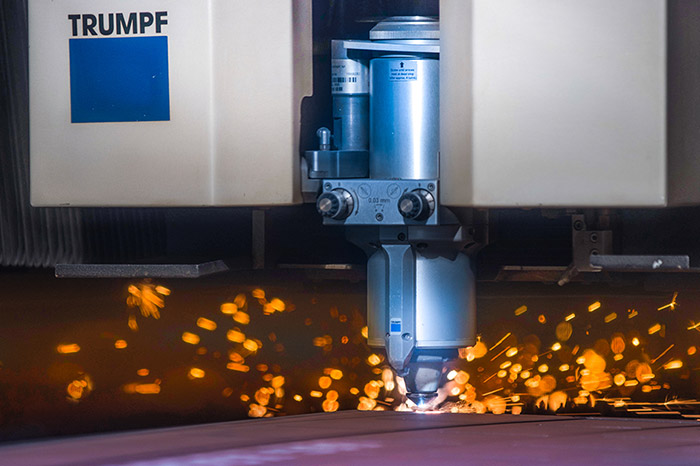
Safety Precautions For Waterjet Cutting Operations
Waterjet cutting is a versatile and efficient method used in various industries for precision cutting of materials using high-pressure water mixed with abrasive substances. While highly effective, waterjet cutting operations involve inherent risks that require strict adherence to safety precautions.
Personal protective equipment (PPE):
Ensure all personnel involved in waterjet cutting wear appropriate PPE, including safety glasses or goggles to protect against splashing water and abrasive particles. Additionally, wear hearing protection due to the noise generated by the cutting process and gloves to shield hands from abrasive materials.
Machine guarding:
Install and maintain machine guards and barriers around the waterjet cutting area to prevent accidental contact with the cutting head and moving parts of the equipment. Guards should be secure and designed to withstand the pressures and forces involved in the cutting process.
Training and certification:
Provide inclusive training for operators on safe operating procedures, equipment use, emergency shutdown protocols, and hazard recognition. Operators should be certified and competent in handling the specific waterjet cutting equipment they are operating.
Risk assessment and hazard identification:
Conduct regular risk assessments of the waterjet cutting operation to identify hazards such as high-pressure water jets, abrasive dust, electrical hazards, and slips/trips/falls. Implement control measures to mitigate these risks, including safe work practices and emergency response procedures.
Ventilation and dust control:
Ensure adequate ventilation in the cutting area to control airborne abrasive dust generated during the cutting process. Use local exhaust ventilation systems and dust collection equipment to capture and remove abrasive particles from the air, minimizing exposure to operators.
Follow safe practices for material handling and setup to prevent injuries and ensure stability during cutting operations. Secure materials firmly on the cutting bed to prevent movement or shifting, which can affect cutting accuracy and pose safety risks.
Emergency preparedness:
Establish clear emergency procedures and provide training to personnel on responding to incidents such as equipment malfunction, electrical hazards, or injuries. Maintain accessible first aid kits, fire extinguishers, and emergency contact information in the cutting area.
Schedule regular inspections and maintenance of waterjet cutting equipment to ensure optimal performance and safety. Replace worn or damaged parts quickly, and follow manufacturer guidelines for maintenance and lubrication to prevent equipment failure.





